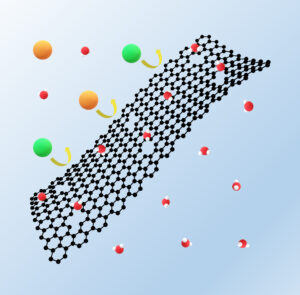Membrane desalination is an efficient way to desalinate water but maintaining uniformity of the pore size is a challenge.
A single “large” hole can cause high leakage, compromise membrane performance and contaminate the water. How do you drill trillions of holes between the size of 0.3 and 0.6 nanometers over a square centimeter of material just one atom thick?
Vanderbilt engineering researchers developed a new way. They have reported a breakthrough in scalable fabrication of graphene membrane with a sealing technology that corrects for size so all the pores remain small enough to trap salt ions and small molecules but allow water to pass. Their work is published in the American Chemical Society’s journal Nano Letters.

Piran Kidambi, assistant professor of chemical and biomolecular engineering, and his team designed a simple defect-sealing technique based on a gatekeeper analogy. The process in most prior studies ends with the formation of holes in graphene membranes, but the team flipped the steps. They formed holes in the graphene first, using a low-temperature chemical vapor deposition process followed by ultraviolet light in the presence of ozone gas. The holes act as a gatekeeper.
A sealant molecule on one side has to pass through the gate to meet another molecule on the other side and form a seal. If the size of the molecule is smaller than the gate, it will pass through, meet the other molecule and seal the gate. If the molecule is larger than the gate, it won’t get through and the gate remains open.
“Think of it like a fishing net that catches only large fish,” said Peifu Cheng, postdoctoral scholar in chemical and biomolecular engineering and a member of Kidambi’s lab.
Their work is a significant contribution to membrane engineering. It has the potential for transformative advances in high-quality commercial graphene membranes that filter a variety of microscopic ions and molecules, including salts, proteins or nanoparticles, and relevant to industrial applications beyond water desalination, such as gas separations. Such membranes also should be useful for chemical, biological and medical research and the purification of substances used in pharmaceuticals.
“To the best of our knowledge, this is the first demonstration of size-selective defect sealing for nanoporous atomically thin membranes,” Kidambi said.